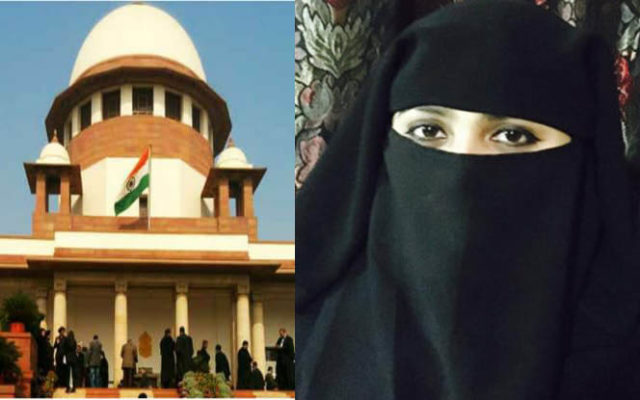The date August 22nd will go down as the most important milestone in the fight for equal rights for women…for it is the day on which Triple Talaq was ruled unconstitutional by the Supreme Court by a 3:2 majority.

Note to readers: Given the scope and weight of this landmark judgment, it is important that we deal with the present topic in smaller compact bits…focusing on one issue at a time. Given this premise, therefore, we will devote this article on understanding the concept of divorce in Islam…so that we all gain a little more perspective by understanding divorce under Islamic Personal Law.
DIVORCE IN ISLAM
Divorce (or ‘talaq’), in Islam, is frowned upon for both men and women with Islam discouraging divorce. However, despite encouraging the continuation of marriage, but Islam does grudgingly acknowledge that divorce sometimes is the only solution to untenable incompatibility. Then again…why not?!? In Islam, marriage is a civil contract.
KINDS OF TALAQ
A cursory reading of the Muslim Personal Law (the Law that governs all Muslims in India), reveals that there are three kinds of talaq through which the union between a husband and wife can come to an end in Islam:
1) Talaq-e-Raja’yee or Revocable Divorce;
2) Talaq-e-Baayen or Irrevocable Divorce; and
3) Talaq-e-Mughallaz or Binding Divorce
Talaq-e-Raja’yee: It is a revocable divorce whereby a man can go back to his wife (without the need of either remarriage or even the woman’s agreement, which as it is…is inconsequential) after the pronouncement of talaq within the period of Iddat.
Talaq-e-Baayen: If the period of Iddat has lapsed, the man cannot go back to his wife unless he remarried her again (with her consent) upon the payment of fresh ‘mehr’ to her.
Talaq-e-Mughallaz: In the event of a third talaq, the man can neither go back to his wife nor can remarry her unless she gets married to another man, who must then either die or divorce her. Of course, for such a marriage to happen, it is important that both the man and woman give their consent for the marriage.
METHODS OF TALAQ
According to the Muslim Personal Law, there are two methods of talaq (divorce):
- Talaq-e-Sunnah, or the Regular Form of Divorce, and
- Talaq-e-Bida’t, or the Irregular Form of Divorce.
Talaq-e-Sunnah: There are two types of divorces under Talaq-e-Sunnah — Talaq-e-Ahsan and Talaq-e-Hasan. Talaq-e-Ahsan is the “most laudable divorce” in which the husband utters the word ’talaq’ (revocable divorce) when the wife is in tuhr (state of purity, i.e. when she is not menstruating and he has not had intercourse with her). As soon as the period of iddat is over, the divorce then becomes “irrevocable divorce”. He can, of course, as mentioned earlier remarry her upon her consent by paying fresh mehr.
Moreover, the husband can pronounce the first talaq during the first tuhr of his wife, the second talaq in her second tuhr, and the third talaq in her third tuhr. This method of divorce is known as talaq-e-hasan’.
Talaq-e-Bida’t: It is an irregular form of divorce which actually goes against the Quranic teachings and Sunnah, whereby a man pronounces the three talaqs…all at once…or pronouncing talaq when the wife is not in tuhr (i.e. when she is menstruating) or when he had intercourse with his wife. Although against the Quranic teachings, the Muslim Personal Law holds this divorce to be valid under the law.
IN THE END
Of course, the discourse does not end here. There’s much to think about…something that we will soon discuss in the next segment to this series. So, keep watching this space for more…and here’s to the antecedent that would eventually lead to the realisation of a long-held dream: The Uniform Civil Code!






























